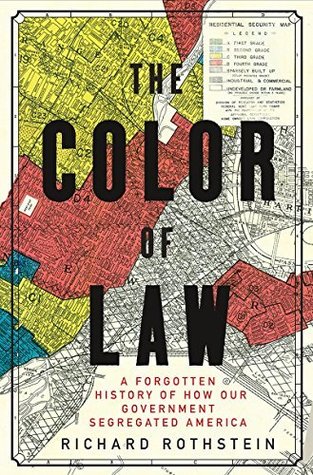More on this book
Community
Kindle Notes & Highlights
Read between
March 22 - April 17, 2025
At the time, the Federal Housing Administration and Veterans Administration not only refused to insure mortgages for African Americans in designated white neighborhoods like Ladera; they also would not insure mortgages for whites in a neighborhood where African Americans were present.
In 1934, the city of St. Louis proposed to raze the DeSoto-Carr area, a tenement neighborhood on the near north side whose population was split nearly evenly between whites and African Americans. For the cleared site, the city proposed a whites-only low-rise project. When the federal government objected to the city’s failure to accommodate African Americans, St. Louis agreed to a blacks-only project as well. In the end, St. Louis built a segregated development for African Americans in the DeSoto-Carr area, while it demolished another previously integrated neighborhood south of downtown to
...more
The Igoe towers, for example, were initially reserved for whites only, while Pruitt was for African Americans. Black families were accepted in Igoe only when whites could no longer be found to fill vacancies.
The removal of African Americans was gradual. By 1890, black settlers were living in every Montana county. By 1930, though, eleven of the state’s fifty-six counties had been entirely cleared of African Americans, and in the other counties few remained.
Helena’s wealthiest white neighborhoods was an African American. Helena’s African Methodist Episcopal Church was important enough in 1894 to host its denomination’s western regional conference. The city had black newspapers, black-owned businesses, and a black literary society that sometimes drew one hundred attendees to
Some towns rang bells at sundown to warn African Americans to leave. Others posted signs at the town boundaries warning them not to remain after sundown.
The first to do so was Baltimore, which in 1910 adopted an ordinance prohibiting African Americans from buying homes on blocks where whites were a majority and vice versa.
The reporting made me wonder how the St. Louis metropolitan area became so segregated. It turns out that economic zoning—with a barely disguised racial overlay—played an important role.
According to Bartholomew, an important goal of St. Louis zoning was to prevent movement into “finer residential districts . . . by colored people.”
The St. Louis zoning ordinance was eventually adopted in 1919, two years after the Supreme Court’s Buchanan ruling banned racial assignments; with no reference to race, the ordinance pretended to be in compliance. Guided by Bartholomew’s survey, it designated land for future industrial development if it was in or adjacent to neighborhoods with substantial African American populations.
In addition to promoting segregation, zoning decisions contributed to degrading St. Louis’s African American neighborhoods into slums. Not only were these neighborhoods zoned to permit industry, even polluting industry, but the plan commission permitted taverns, liquor stores, nightclubs, and houses of prostitution to open in African American neighborhoods but prohibited these as zoning violations in neighborhoods where whites lived.
first manual and model zoning ordinance, the association followed up by adopting a code of ethics that included this warning: “a realtor should never be instrumental in introducing into a neighborhood . . . members of any race or nationality… whose presence will clearly be detrimental to property values in that neighborhood.”
it can fairly be said that there would be many fewer segregated suburbs than there are today were it not for an unconstitutional desire, shared by local officials and by the national leaders who urged them on, to keep African Americans from being white families’ neighbors.
It became increasingly common as the twentieth century proceeded and manufacturing operations grew in urban areas. The pattern was confirmed in a 1983 analysis by the U.S. General Accounting Office (GAO), concluding that, across the nation, commercial waste treatment facilities or uncontrolled waste dumps were more likely to be found near African American than white residential areas.
Oftentimes, as in St. Louis, zoning boards made explicit exceptions to their residential neighborhood rules to permit dangerous or polluting industry to locate in African American areas.
In 1991, the Environmental Protection Agency issued a report confirming that a disproportionate number of toxic waste facilities were found in African American communities nationwide.
A ST. LOUIS story illustrates how stark the FHA policy could be. Charles Vatterott was an area builder who obtained advance FHA guarantees for a subdivision of single-family homes in western St. Louis County. Vatterott called his development St. Ann and intended it to be a community for lower-middle-class Catholics, particularly returning war veterans. He began construction in 1943, and while he made a special effort to recruit Catholics, he did not prohibit sales to non-Catholic whites—he barred only blacks, as the FHA required.
So after completing St. Ann, he constructed a subdivision for African Americans—De Porres, in the town of Breckenridge Hills, a few miles away from St. Ann. He intended to sell to African Americans whose incomes and occupations, from truck drivers to chemists, were similar to those of St. Ann buyers.
because De Porres was intended for African Americans, Vatterott could not get FHA financing for it. As a result, the construction was shoddier and the house design skimpier than it had been in St. Ann.
The De Porres development for African Americans also lacked the community facilities—parks and playgrounds—that Vatterott had built into the St. Ann subdivision.


